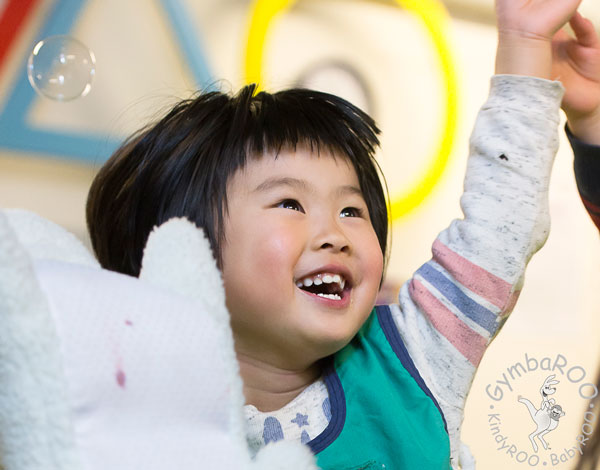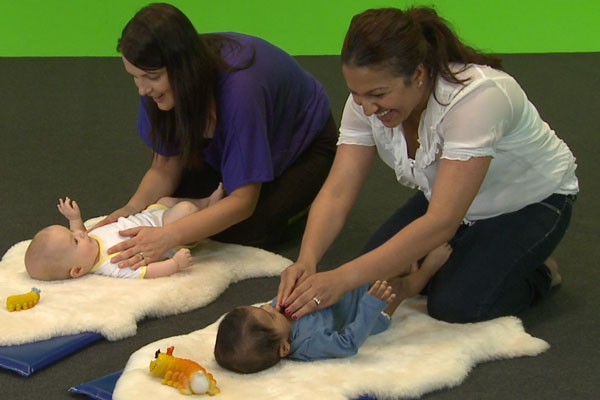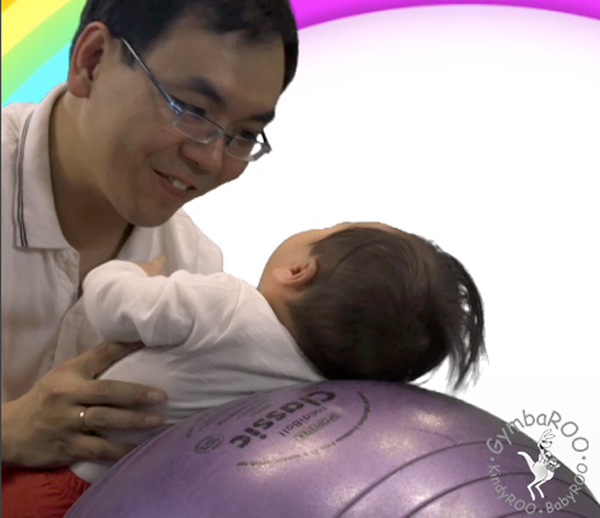Join the thousands of parents already raising smarter, happier babies with our online baby classes: The Active Babies Smart Kids series. Click here.
GymbaROO-KindyROO kids are excelling academically, emotionally, in leadership roles and on the sporting field. Find us at: GymbaROO-KindyROO
Quite often at GymbaROO-KindyROO classes I’m asked my opinion on learning a second language at early infancy. As I am bilingual myself, I always answer, that bilingual children may face some challenges, but the advantages far outweigh any disadvantages.
Imagine having access to two cultures and two different worlds for experiences and how enriching that can be for a child. With each language come special sayings, stories, songs, poetry, literature, music, history and culture. Being bilingual gives the child the opportunity to socialise and communicate with the whole family who speak another language and with their community. Being able to communicate helps to establish a closer bond with family members and gives the child security in identity. It has been noted that bilingual children have greater tolerance for other cultures and languages. They often show more sensitivity to the needs of others.
Linguistic researchers claim, that if parents want their child to be bilingual, they should expose their baby to the sounds of both languages between birth and seven months. Auditory pathways are established very early and monolingual babies’ perceptive abilities are remarkably fine tuned very early in life. Babies know a lot about their language sounds long before they start to produce their first words and even at the age of a few months, will notice when someone who has been speaking English to them, switches to Japanese. Bilingual babies are even more sensitive to a wider range of phonetic contrasts and retain this ability for a longer time than monolinguals, for whom the ‘window’ of highest perceptive sensitivity to contrasts that are not present in their own language, closes around their first birthday. Read more on the importance of the first year to learning languages here.
Access our video on how to help your baby’s speech and language development here.

Using new techniques, researchers have shed light on how bilingualism affects the brain. Similar brain activity in the left Broca’s area and left dorsolateral prefrontal cortex was found in bilingual and monolingual children, when the language tasks only involved one language. However, when the bilinguals were simultaneously processing each of the two languages and rapidly switching between them, they showed an increase in brain activity in both the left and right hemisphere Broca’s areas. Bilinguals therefore engage more of the neurons available for language processing.
Scientists have found that being bilingual produces changes in the anatomy of the brain. Children who speak two languages have more grey matter in the language region of the brain. The earlier they began learning two languages, the larger the grey area ie. learning the languages before the age of five.
As researchers continue to unravel the mystery of the brain’s role in the development of language skills, they have discovered that being bilingual seems to have no impact on the early milestones such as babbling. Infants in the bilingual homes readily discriminate between the two languages both with the sounds and the grammar. Somewhere in the midst of all the babbling, the first words appear, around about twelve to thirteen months. Once the first few words have been learned, the infant begins the work of identifying specific links between words and objects, actions or people. Bilingual children have shown enhanced cognitive skills, which are due to increased computational demands of processing two different language systems. eg. The brain that has been trained for bilateral language must look up and attend to the meaning eg. of ‘cup’ in one language, while suppressing the meaning for ‘cup’ in the other language. This requires heightened computational analysis in the brain.
In preschool and early schooling, bilingual children have shown a bigger capacity to think, not only to think about language, but also to think more creatively. They have two or more words to develop ideas and the ability to think more flexibly. In addition, most bilinguals display greater ability to focus on language tasks than do monolingual children. These advantages enable the bilingual children to more easily grasp the connection between sounds and symbols in the beginning stages of learning to read, giving them a head-start. They are less fixed on sounds and focus more on meanings. Research has also shown that bilingual children tend to do better on IQ tests. They also show a raised self-esteem. Being able to switch from one language to another makes the children feel good about themselves and their abilities.

Infants in bilingual homes may reach a few milestones later than those learning a single language. For example the bilingual infant’s receptive and expressive vocabularies are as large as those of one- language speakers, but the words they know are divided between the two languages. Consequently, they can be behind in word knowledge no matter which language is considered, a difference that can to persist into the school years. However, bilingual children develop compensatory strategies that allow them to make up this inefficiency. They tend to perform memory tasks with more accuracy and can solve problems with misleading or distracting information more easily.
Studies indicate that bilingual children who are equally fluent in both languages encounter no more learning problems in school, than monolinguals. If a child has a speech or language difficulty, it will show up in both languages. The problems are not caused, by learning two languages. However many children do not attain equal fluency in both languages. As a result they tend to think more slowly in the language in which they are less fluent. When the less fluent language is the one in which the schooling is conducted, they are at risk of learning problems. Therefore parents who choose to teach their children two languages should probably take into account their ability to fully support the child’s acquisition of fluency in both languages. This requires increased parental input.
Clearly, the advantages of being bilingual are substantial. Knowing two languages increases opportunities and choices and provides many social and economic benefits as adults.
Marianne Schriever is a past School Principal and neuro-educational consultant for GymbaROO/KindyROO
Primary sources: Being Bilingual – August and Hakuta 1999. Cerebral Organization in Bilinguals – Dr. D. Klein 2004. Cognitive Effects of Bilingualism – Tagaya Eri 2001
GymbaROO-KindyROO
Thousands of parents, babies and children are presently involved in our programs and creating rising stars. GymbaROO-KindyROO kids are excelling academically, emotionally, in leadership roles and on the sporting field. Come join all the fun and learning! “GymbaROO – The best decision I ever made for my child.” Classes from 6 weeks old – 7 years GymbaROO KindyROO
GymbaROO-KindyROO
Thousands of parents, babies and children are presently involved in our programs and creating rising stars. GymbaROO-KindyROO kids are excelling academically, emotionally, in leadership roles and on the sporting field. Come join all the fun and learning! “GymbaROO – The best decision I ever made for my child.” Classes from 6 weeks old – 7 years GymbaROO KindyROO
Enjoy the following GymbaROO-KindyROO articles
GymbaROO-KindyROO: Who, what, where, why and how
All about GymbaROO-KindyROO’s online baby classes for parents and babies: Active Babies Smart Kids
How to raise a smarter, happier baby
Why active babies make smart kids
Become a GymbaROO-KindyROO franchisee
Bilingual babies: Baby’s first year is the most important.
Sing, talk and dance during pregnancy: It boosts your baby’s brain growth.
NAPLAN results improve with LESS reading and maths and MORE GymbaROO.
Click here for more GymbaROO-KindyROO article choices





